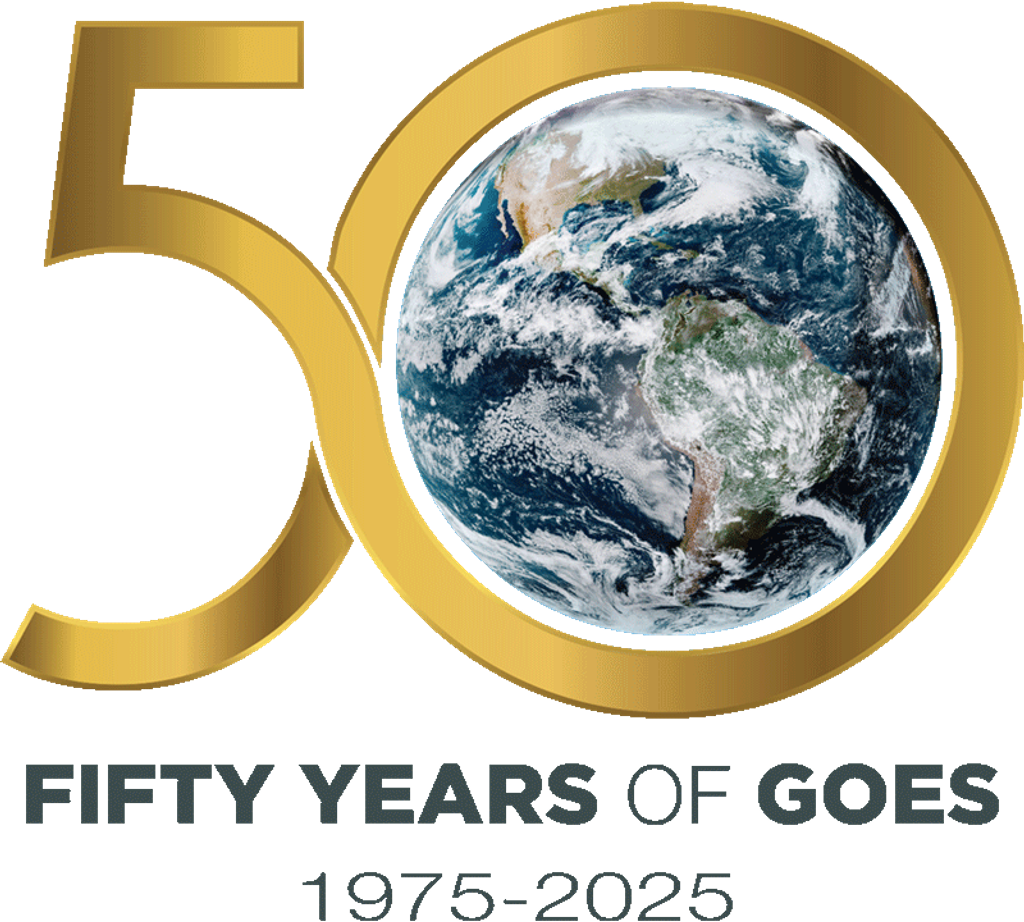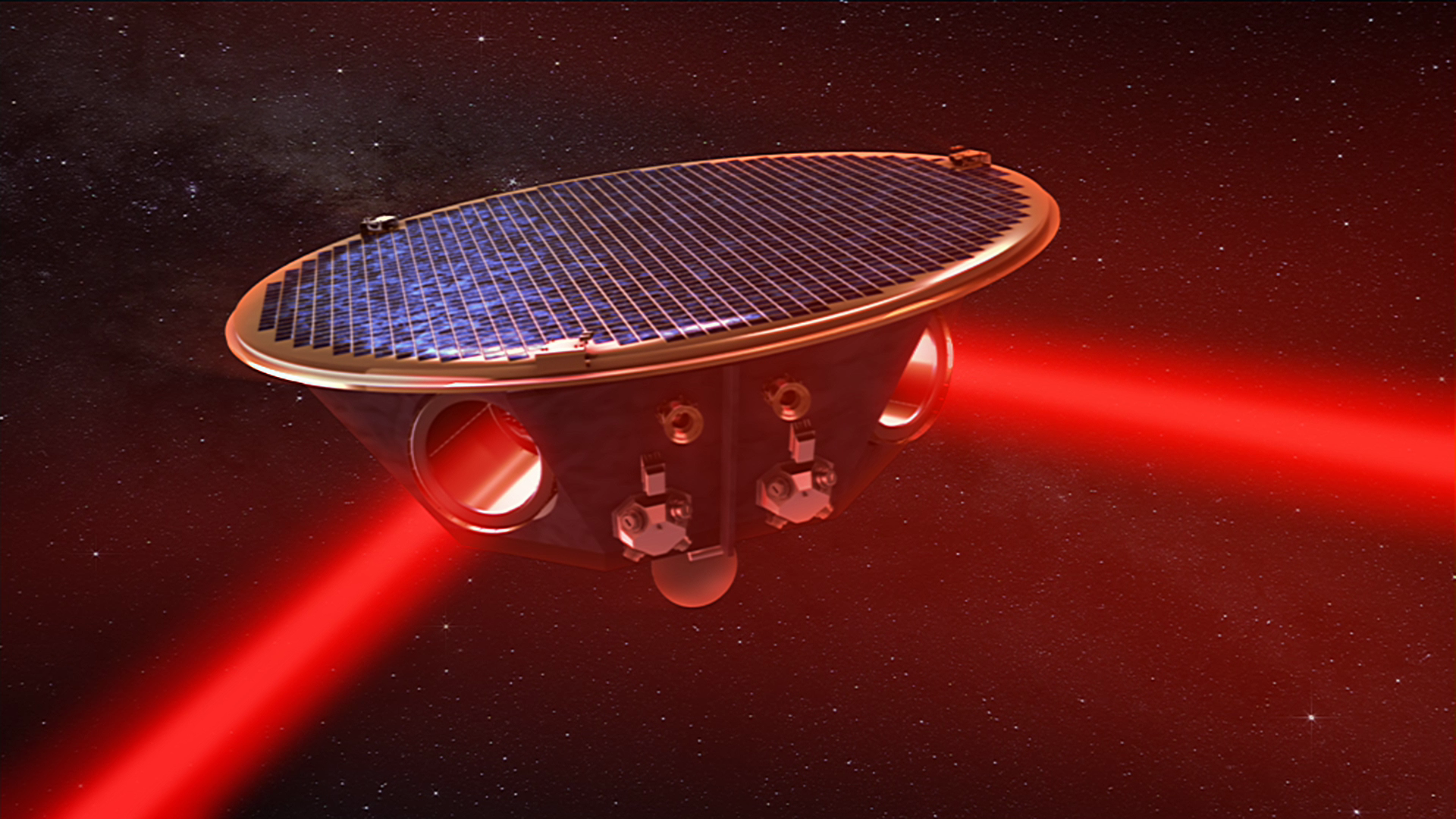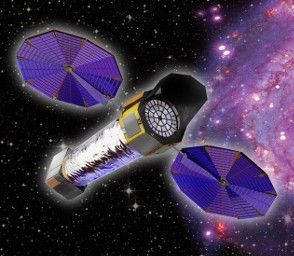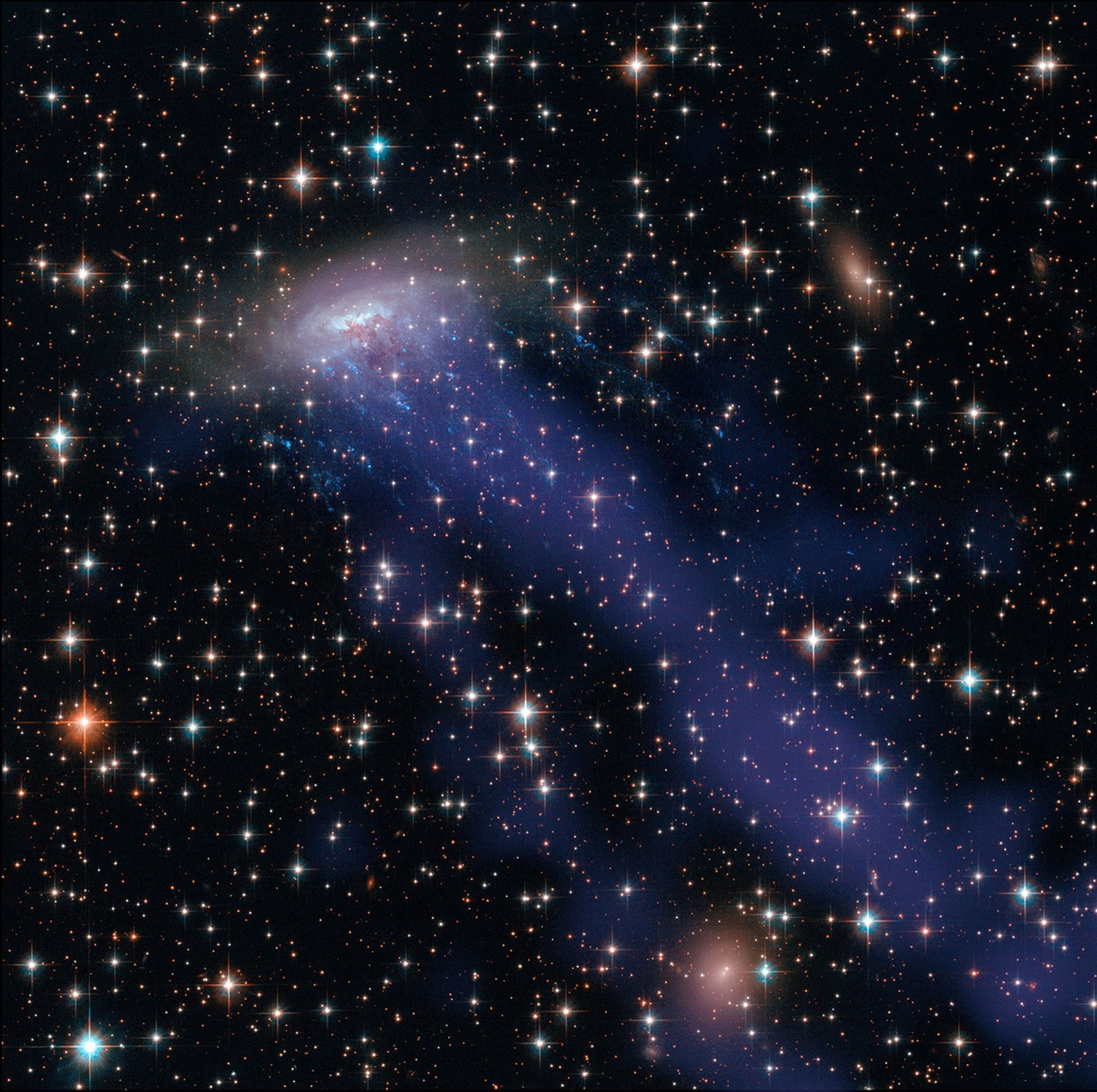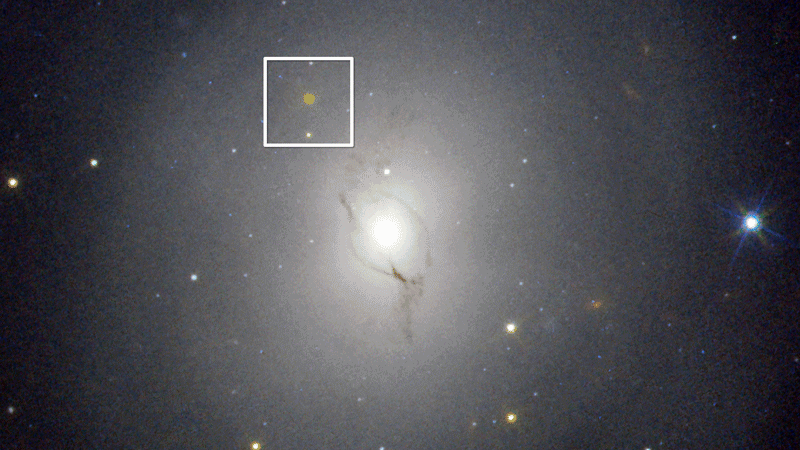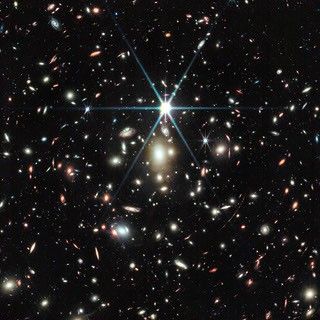Physics of the Cosmos
Studies
NASA funds concept studies which help refine mission designs, assess technical readiness, and identify potential risks. This process ensures that only the most scientifically valuable, technically feasible, and cost-effective missions advance toward full development and eventual launch.
NASA Participation in the ESA-Led L3 Gravitational Wave Mission
2016-2018
NASA intends to partner with ESA on the third Large-Class mission (L3) in ESA's Cosmic Vision 2015-2025 Programme, planned for launch in 2034. ESA has selected a gravitational wave observatory as the science theme.
Lynx X-ray Observatory
The Lynx mission concept seeks to provide unprecedented X-ray vision into the universe. Lynx will directly observe the dawn of supermassive black holes, reveal the drivers of galaxy formation, trace stellar activity (including effects on planet habitability), and transform our knowledge of endpoints of stellar evolution. Expanding on the legacy of the Chandra X-ray Observatory, Lynx’s design will include excellent angular resolution, high throughout, a large field-of-view, and high spectral resolution for both point-like and extended sources.
Probe-Class Astrophysics Mission Concepts
2016
A Study to Assess Community Interest in Probes and Understand Range of Concepts.
In 2015, Paul Hertz (Director, NASA Astrophysics Division) issued a memo to the astronomical community to stimulate planning for the 2020 Decadal Survey. Now that the question of large mission studies is advancing to the STDT mission-study phase, it is an appropriate time for the PhysPAG to consider the question of Probe-class missions in a more formal fashion.
NASA / ESA Athena Study
2014-2017
The NASA / ESA Advanced Telescope Athena was selected to address the Cosmic Vision theme of the "Hot and Energetic Universe."
NASA is working with ESA to define the possible NASA contribution to this ESA-led X-ray mission. One U.S. scientist, Randall Smith of the Harvard-Smithsonian Center for Astrophysics, has been selected for the SST. Robert Petre of GSFC and Michael Garcia of NASA/HQ are ex-officio members.
X-ray Astrophysics Probe Study
2013-2014
In August 2013, NASA's Physics of the Cosmos (PCOS) Program established a Science and Technology Definition Team (STDT) to study concepts for a potential reduced-scale strategic spectroscopy X-ray mission. The X-ray Astrophysics Probe (XAP) STDT was constituted to assist the Astrophysics Division, through its PCOS Program Office, in developing a reference mission concept.
The mission study was ended with the 2014 selection of the Athena mission in Europe, at which point NASA began efforts to partner with ESA on Athena.
2012 Architecting Studies
NASA's Physics of the Cosmos (PhysCOS) Program initiated two studies to develop mission concepts that could meet some or all of the objectives outlined in the New Worlds, New Horizons decadal report for the areas of X-ray astronomy and gravitational-wave science. The PhysCOS Program worked with these communities to define mission concepts that achieve these science objectives at multiple price points.
This began with the release of a formal Request for Information (RFI) on each topic. In parallel, NASA released an open solicitation inviting members of the science community to participate in a Community Science Team (CST) for the X-ray mission or the gravitational-wave mission. The Program Office worked with each CST to review the RFI responses. In December 2012, workshops, which were open to the community, were held to discuss the RFI responses and define the mission concepts to be studied.
A PhysCOS Program study team, working with each CST, identified the requirements relevant to each concept, defined the mission configuration options, executed mission design runs at mission design laboratories, refined the mission concepts, and drafted a mission concept study reports.
Details relevant to each of these architecting studies can be found by following the links below:
Other Studies
News Straight to Your Inbox
Subscribe to your community email news list
We will never share your email address.
















